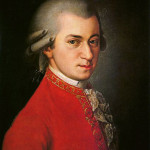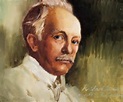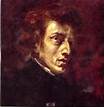Itzhak Perlman & Friends: It was the Top of musical performance. Itzhak Perlman is the great violinist who is also the Great Human. He clearly loves to make each note, they are always perfect, and loving the music is the same as his love of the audience. The audience feels that in each note that they hear and absorb. If you are Itzhak Perlman, your friends are breath taking artists, too. In this phenomenal performance his friends were two of the world’s greatest pianists, Emanuel Ax and Jean-Ives Thibaudet, and the Juilliard String Quartet. This is a new generation Juilliard String Quartet. Bringing these gifted musicians onto the stage to make music with Perlman expands his repertory possibilities.
 Itzhak Perlman, Violinist, humanitarian, mentor, founder of the Perlman Music Program which mentors “gifted young string players.”
Itzhak Perlman, Violinist, humanitarian, mentor, founder of the Perlman Music Program which mentors “gifted young string players.”
The program presented two works from the 18th century: Sonata for Two Violins in E minor, Opus 3, no. 5, by Jean-Marie Leclair, written ca. 1734; and Piano Quartet inE-flat major, K.493, by Wolfgang Amadeus Mozart, written 1786. A 19th century masterpiece filled the second half of the program: Concert in D major, Opus 21, by Ernest Chausson, written in 1889-91. What is the main thing these three compositions have in common? Each piece is amongst the most difficult of its kind.
 Areta Zhulla, Violinist, first violin of the Juilliard String Quartet
Areta Zhulla, Violinist, first violin of the Juilliard String Quartet
 Jean-Marie Leclair, composer (1697 – 1764)*
Jean-Marie Leclair, composer (1697 – 1764)*
Leclair left his home in Lyon to publish his compositions of violin sonatas. In Lyon, he became a master of the violin, dancing, and lace-making, a thorough artist. In Paris, his violin compositions were praised with one slight problem; they were so hard to play. A writer of Leclair’s time called them “a sort of musical algebra capable of rebuffing the most courageous of musicians.” The duet performance by Areta Zhulla and Itzhak Perlman was dazzling. I especially admired the way the music weaved between each violin. There would be a place where one violin would find a place to enter and play into, with, or around the other one. !8th century dances had intricate patterns; sometimes it is the music that follows the dance. As a dance master, he would have the music in his body. Now that I know he was a lace-maker, I feel sure that the design of the music and the playing of the violins were tracing movements of the needle and thread in and out to make a challenging, mathematical, beauty. It is there physical to touch in lace, audible and seen in the playing of the music.
 Wolfgang Amadeus Mozart, composer (1756 – 1791)*
Wolfgang Amadeus Mozart, composer (1756 – 1791)*
Mozart’s Piano Quartet in E-flat major, K. 493 was a stunning marvel. The musicians are perfection, a word I rarely use. I have loved this particular quartet for a long time. I went to Tower Records – I did say a long time ago – in North Beach and read through album covers. I chose a record (stop laughing) of Mozart’s quartets. When I heard the opening notes of this performance, I felt myself smile all over. The performers were truly perfection: Itzhak Perlman, violin; Molly Carr, viola; Astrid Schween, ‘cello; Emanuel Ax, piano. When Mozart had a publishing deal for three quartets, the publisher paid Mozart not to compose more. In fact, the publisher thought the first piano quartet was not well received. Fortunately for Mozart and all of us, he had finished the second Piano Quartet. It must have been a very good time for Mozart’s composing as this work entered Mozart’s catalogue just after the Marriage of Figaro. Although its brilliance was obvious, this Quartet was too difficult. A writer for a German journal wrote this: “Many another piece keeps some countenance, even when indifferently performed; but, in truth one can hardly bear listening to this product of Mozart’s when it falls into mediocre amateurish hands and is negligently played.” The performance I heard kept me on the edge of the seat. It is lush, sometimes mysterious with changing rhythms, and a fascinating exchange among the players. Is it possible to translate musical talk to spoken English? No, that is why it is music. The final movement features the pianist and first violin. What an experience to hear this from them.
 Ernest Chausson, composer (1855 – 1899)*
Ernest Chausson, composer (1855 – 1899)*
Chausson’s Concert in D major, Opus 21 is powerful and full of wonders. Concert is not a typo; it is a name for chamber music in the late 18th c. I knew his name, may have heard other pieces and may have not. Surely, I had never heard this. It is a gigantic and altogether successful creation performed by Itzhak Perlman, violin; Jean-Ives Thibaudet, piano; and the Juilliard Quartet. The music pays attention to the combinations that are well knit for all six instruments becoming one while each is heard. James M. Keller cites Chausson’s mentoring by Caesar Franck, and yet this work is still Chausson’s. Each of the four movements – Decide, Sicillienne, Grave, and Finale – added drama and character with their strong presence. The Sicillienne is beautiful in its sweeping lyricism. Grave lowers one’s feelings to a mysterious sense of loss. The energetic Finale reminds the listener of the themes of all three that came before. This listener felt her eyes open wide at the sensational Thibaudet playing precisely and powerfully. He was brilliant; Perlman was brilliant. Having both together made me want to jump up and down, but I only stood and applauded like the entire audience kept doing for many curtain calls. Many. I thought I would count, but I gave up. All six of the performers joined in an extraordinary encore and more bows and applause. Someone turned the lights back on, and, reluctantly we got the message that we had to go home.
*These composers share dreadful and inexplicable deaths. I am inserting this here so that it will not be the sad subject at the end of this post. No interpretation of the deaths from me. Jean-Marie Leclair was murdered. He lived in a bad neighborhood. He had been stabbed three times and was found in a pool of blood. It is still an open case in Paris. Three suspects: his gardener found the body; his nephew wanted Leclair to help him become a violinist but Leclair did not; Louise, an ex-wife who inherited his estate and sold off his property. Mozart died of illness; there are more than 100 theories of how he died. Chausson was trying out the new gizmo: a bicycle. He lost control of the bike, ran into a brick wall, cracked his skull. Imagine that each one would have composed more wonderful music; I am grateful for what I heard.
 Emanuel Ax, pianist
Emanuel Ax, pianist

 Wolfgang Amadeo Mozart
Wolfgang Amadeo Mozart Arnold Schoenberg, photograph by Man Ray
Arnold Schoenberg, photograph by Man Ray Medieval woodcut of trickster, Tilll Eulenspiegel, courtesy, San Franciso Symphony
Medieval woodcut of trickster, Tilll Eulenspiegel, courtesy, San Franciso Symphony









